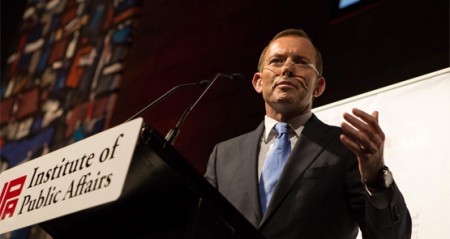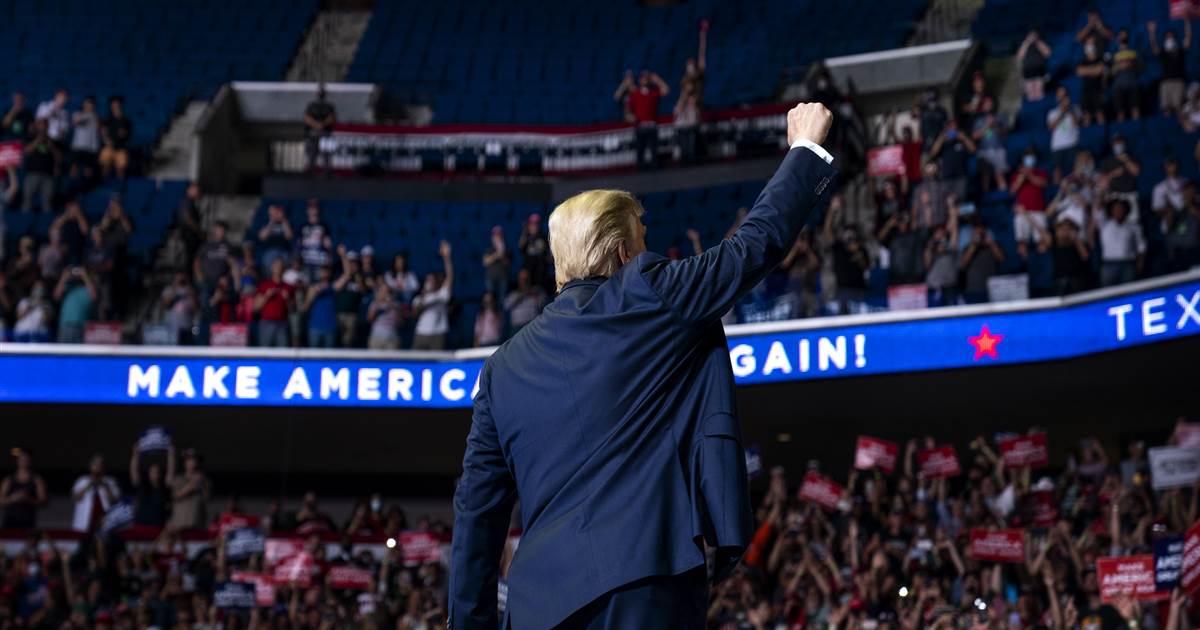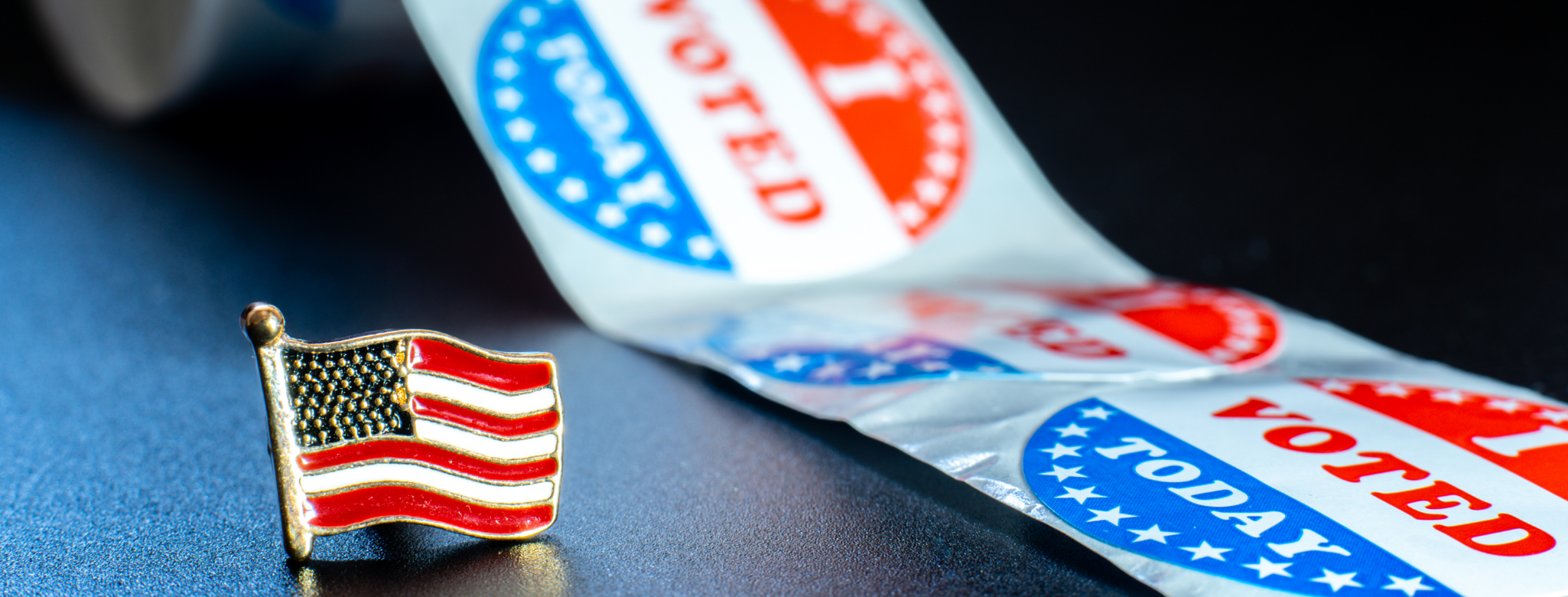|
Milo Burgner Opinion piece Milo is an Arts student studying Media and Sociology at the University of Melbourne. He writes about music, pop culture and politics. He has declared no conflicts of interest in writing this piece. Image source: Crikey @ Andrew Crook
0 Comments
Claudia Burgner
Opinion piece Claudia is a third year Bachelor of Arts student at the University of Melbourne, majoring in Politics and International studies. She has declared no conflicts of interest in writing this opinion piece. She would like to acknowledge Dr Bianca Fileborn's groundbreaking work in this field.  Image source: Bloomberg @ Kira Lerner Image source: Bloomberg @ Kira Lerner Claudia Burgner Opinion piece Claudia is a third year Bachelor of Arts student at the University of Melbourne, majoring in Politics and International studies. She has declared no conflicts of interest in writing this opinion piece. The criminal justice system has been widely criticised as a failure of both public policy and the welfare state, acting as a ‘band-aid’ solution for a wide range of social problems such as homelessness, drug addiction and family violence. Phrases like ‘mass incarceration’ and ‘the prison-industrial complex’ have become short-hand for describing the failures of the criminal justice system and play a critical part in this discourse. Community-based punishment has been posited as an ‘alternative’ to incarceration, allowing convicted offenders to be disciplined within the community rather than by a custodial sentence. American sociologist Stanley Cohen argued that ‘the development of alternatives to incarceration is synonymous with a widening 'net' of penal control’ (Cohen 1985). Should we make better use of this ostensibly more ‘lenient’ system? A central contradiction of community-based punishment is that in order to present a viable alternative to incarceration, it must be punitive enough to be an adequate response to the judicial demand for sentences that punish and restrict. Thus, it often involves intrusive and invasive procedures such as drug tests, unscheduled home visits, and electronic monitoring devices. It has been suggested that allowing offenders to remain in the community helps them ‘avoid criminogenic effects of incarceration’, keeping them ‘employed, and engaged with their families, friends, and communities’ (DeMichele 2014). In reality, these enforced restrictions often prohibit offenders from maintaining employment and social support networks. Considering common risk factors for criminalisation, such as addiction and homelessness, many offenders struggle to comply with the restrictive conditions of community punishment. Additionally, community-based punishment is commonly implemented without any formal trial or adjudication of guilt; alleged offenders are required to admit they have committed an offence before they are eligible for community-based punishment. This is likely to encourage innocent individuals to plead guilty in order to avoid court proceedings. The principle of community-based punishment has the potential to provide a constructive framework which might mitigate criminalisation. It could also provide an avenue to treatment programs and support for those who may not otherwise have access to these resources. Similarly, many incarcerated people would likely prefer community-based punishment to a custodial sentence. The challenge is to strike a balance between easing the ‘pains of imprisonment’ whilst not increasing the hold and reach of the criminal justice system on society. Therefore, community-based punishments should be beneficial to both offenders and the wider community, and lead to meaningful decarceration. For this to be successfully implemented however, significant transformation of the criminal justice system is needed. The existing model of community-based punishment has resulted in a growing population under the jurisdiction of the criminal justice system who may have otherwise avoided criminalisation. For example, in Australia, the number of people under supervision in the community has increased by 30.2%, since 2007, whereas the prison population has increased by 20%. Most of these ‘new’ offenders are ‘shallow-end offenders’, who are likely would not otherwise have been incarcerated. Existing community-based punishment programs ‘mimic the very custodial features they set out to replace’. Hence, I argue that community-based punishment should only be used to supplement cases where individuals would otherwise be incarcerated. It should not be employed as a new form of punishment in cases where the individual would not have otherwise come into contact with the criminal justice system. Jamie Spiteri Opinion piece Jamie Spiteri holds a Bachelor of International Relations from La Trobe University and currently works on Security Policy. He is predominantly interested in Security and Strategic studies, War studies and Indo-Pacific regionalism. Recent comments by Australian politicians have reminded Australians that the likelihood of military escalation with China over Taiwan are as realistic now as ever. Peter Dutton, Australia’s new Defence Minister, has used his new platform to saliently outline the ongoing strategic challenge posed by the rise of China as a global superpower. Dutton’s hawkish outlook is neither surprising nor without merit; as Australia’s new Defence Minister, it behoves Dutton to outline the strategic threats that Australia faces and why he is spending billions of Australian tax payer dollars. Furthermore, in related successive statements, Home Affairs secretary Mike Pezzullo warned of the growing likelihood of war in the Indo-Pacifc, while Prime Minister Scott Morrison announced extension plans for Australian military bases in the north of the country committing to a “free and open” Indo-Pacific. However, there are some very real concerns with planning for a conflict with China over Taiwan, most notably that it is unlikely to happen. Such a campaign would be insurmountably costly, unlikely to succeed conclusively and more importantly, China has in its possession other, far more effective methods of getting what it wants. China as an adversary Dutton’s comments, that war with China over Taiwan “cannot be discounted” are consistent with ongoing hawkish political commentary and with recent Defence doctrine, particularly the 2020 Defence Strategic Update. These documents are verified by Chinese actions which include publishing a 14-point dossier outlining all of the egregious actions Canberra has taken which harm the bilateral relationship. A backdrop to the current strained Australia-China relationship and an important point that Dutton also noted is that reunification of Taiwan into the mainland has been a consistent geopolitical goal of the PRC, and is not one that is likely to abate with China’s continued economic and political rise. In fact, China’s geopolitical activities within the last decade have mirrored the increasing confidence and assertiveness of the CCP: China has become increasingly aggressive and competent at claiming and militarising contested territory in the South China Sea, extending all the way south to the Natuna Sea claimed by Indonesia; China has openly flouted international law by dismissing the 2016 arbitration ruling by the United Nations which ruled overwhelmingly in favour of the Philippines in a maritime dispute also in the South China Sea; China has instituted a range of infrastructure initiatives through its global spanning Belt-and-Road Initiative, also known as One Belt One Road (OBOR) which many commentators and politicians alike have branded as a neo-colonial restructuring of the global order, spanning throughout the entire Indo-Pacific and into Australia’s immediate region in the South Pacific; and China has also successfully, through a series of draconian national security laws effectively quashed Hong Kong’s pro-democracy movement with a view to full annexation. These regional events have occurred simultaneously with increasingly restrictive domestic surveillance, and flagrant human rights abuses against both the Uighur Muslims of Xinjiang province (an area geopolitically pertinent to the aforementioned OBOR) and horrific instances of organ harvesting against Falun Gong practitioners to name but two contemporary examples. This outlines a very important pattern which needs to be discussed in relation to China’s intention vis-à-vis Taiwan, namely that the CCP has become very good at gaining control over converted geographic regions and suppressing political dissent without waging a conventional war. Problems with an invasion of Taiwan There are many drawbacks for China waging a conventional war in order to reunify Taiwan. First, wars in the conventional sense are immensely expensive and have very little chance of reaching a conclusive victory. Hugh White has written extensively on the likely stalemate that would occur should tensions between the United States and China escalate to the point of armed conflict. Presuming that the United States and allies (including Australia) engage in a hypothetical war to defend Taiwan, there is a strong possibility that both belligerent parties reach a point of exhaustion with no conclusive victory. This scenario leads to either the unlikely surrender of one party, or else a final escalation to nuclear engagement. In the meantime, the cost to both belligerent parties in financial and human life terms would be, most likely, catastrophic. Such a scenario is obviously predicated on the presumption that American (and allies including Australia) will support Taiwan in an armed engagement with China. While not a foregone conclusion by any means, it is one that needs to be considered and is somewhat implied by Dutton’s comments in the first place. Secondly, a conflict in which China invades Taiwan and is hypothetically victorious carries the genuine and ongoing risk of immense international backlash involving sanctions from states and multilateral organisations alike. This could result in lost international legitimacy for the CCP in addition to severe economic backlash which would likely compound economic hardships brought on by the arduous fighting and conflict itself. When one considers the relative banality of Hong Kong’s effective subjugation (in comparison to the carnage of an outright armed conflict) it appears strategically foolish for China to engage in such a risky military manoeuvre that has no guarantee of success and will likely be enormously expensive even if it is. This appears especially true considering that China has both the skill and practice to attempt such a hypothetical take-over by other means such as conducting a ‘new’ type of war. A ‘New’ War: What will happen? This ‘new’ type of war is a honed and refined People’s Liberation Army (PLA) doctrine known as ‘Unrestricted Warfare’ (URW). It is unrestricted in the way that it focuses on militarizing targets and aspects of a society far broader than the conventional aspects of war. URW focuses not on soldiers, or tanks or fighter jets, but rather it focuses on using economics, information, culture, politics, legislature, cyber, infrastructure, environmental factors, and almost any other facet of a society to gain an advantage. In his recent book The Dragons and the Snakes, David Kilcullen summarised URW stating how, “it dramatically broadens the definition of war beyond battlefield dominance, suggesting that war no longer means using armed force to compel the enemy to submit to one’s will”. Here we can see examples of Hong Kong’s subjugation, the geopolitical extension in the South China Sea and the subjugation of the Uighurs in Xinjiang without the use of conventional military aspects. URW is not a completely unknown phenomenon in Australia as the 2020 Strategic Update spoke of it but used the preferred term ‘Grey Zone’ to discuss the same threat vectors. Semantics aside, URW is the most likely way that China will seek to reunify Taiwan and is an area that Australia must compete in moving forward. The URW Grey Zone approach certainly takes longer and requires disciplined patience, however patience has consistently been one of Beijing’s strong points. Additionally, abolishing term limits means that Xi Jinping certainly has time to wait to achieve his country’s greatest geopolitical ambition. Overall, it appears that Peter Dutton’s comments were correct. Conflict with China over Taiwan cannot be discounted, but it is unlikely that a conflict will look like the one he is referring to. Attacking Taiwan’s politicians, cyber infrastructure, economy, information media and slowly but surely influencing their news, laws and allies just like they did in Hong Kong, and with countless other examples in the Indo-Pacific and in Australia’s own region through OBOR, will cost China less in the long and achieve a more conclusive result. Jarryd Evison-Rose Opinion piece The author has declared no conflicts of interest in writing this opinion piece, aside from an interest in campaign finance. Australia’s current weak campaign finance regulatory framework is severely undermining democratic values. High-disclosure limits and a series of loopholes allow private sector firms to exercise a more significant influence over political actors than the average Australian voter. The disenfranchisement is evident through the overall decline of trust and confidence in Australia’s democracy. As outlined in the previous article, belief in Australia’s democracy has declined rapidly between 2013 and 2018 from 71.70% to 40.56%. A primary concern is the power and influence of big business over the major political parties.
This article will examine Australia’s current campaign finance system and highlight the existing loopholes that plague the regulatory framework. In Australia, the federal legislative provisions within the Commonwealth Electoral Act 1918 allow the corporate financing of campaign contributions with minimal regulatory safeguards. Because of this existing system, Federal political parties still heavily rely on private firms to make contributions to election campaigns, leaving policymakers vulnerable to corporate influence. Yet, to try and mitigate this, the Australian Federal Government did establish the Australian Electoral Commission (AEC) in 1984 to minimise this risk and increase transparency utilising financial disclosure regimes. The visibility of these contributions being made public is contingent upon the contribution being over the minimum disclosure threshold of $14,000, leading to the exploitation of disclosure regulation loopholes. Private sector firms can still manipulate the minimum disclosure threshold transparency measures to donate undisclosed donation payments to political parties and candidates. Consecutive Federal Governments have adjusted this minimum disclosure threshold which the AEC maintains over the past two decades from $10,000 in 2005 to $14,000 by 2020. Private sector firms exploit this minimum declaration threshold by making multiple donations just under this disclosure limit. Political parties are not required to declare or provide these donation receipts (Edwards, 2017). While $14,000 as a minimum disclosure threshold is comparatively low compared to the enormous contributions that private firms make. The main concern is that it still well above what a regular voter can afford to contribute to a political cause. Furthermore, the manipulation of the minimum disclosure threshold by private sector firms also allows the concept of donation splitting. The act of donation splitting is where private firms divide up quite large payments into smaller amounts and make multiple separate payments concealed under the minimum threshold (Edwards, 2017). As the current disclosure threshold is $14,000, private firms can make an undisclosed total contribution of $126,000 by splitting their overall donation sum across the 9 Federal political party branches. Because of this manipulation of the AEC disclosure transparency framework to donate undisclosed amounts, private sector firms can still influence policymakers. These methods are only some of the ways private sector firms can accrue influence over Federal policymakers. Additionally, it has been a core reason for the accumulating distrust between the Australian public and government officials. Therefore, campaign finance laws must undertake significant reform. Jarryd Evison-Rose Opinion piece The author has declared no conflicts of interest in writing this opinion piece, aside from an interest in campaign finance. Image Source: The Guardian @ Martyn Vickery/Alamy In late 2018 the Museum of Australian Democracy, in collaboration with the Institute of Governance and Policy Analysis, released the Trust and Democracy in Australia report. The report highlighted the concerning decline of public trust in Australia's democracy, rapidly depreciating from 71.70% to 40.56% between 2013 and 2018. Simultaneously, the report attributed five significant factors to this decline, including media influence and politician accountability deficits, however the most consistent concern between 2014 and 2018 was the negative public perception of big business's power via campaign contributions to major political parties.
Through this first article of a two-part series, I will focus on why corporate sector firms see an incentive to contribute to political actors' campaigns and how it influences policymakers' decision-making. While in the second article of this series, the Australian campaign finance system will be examined in-depth and highlight current loopholes that currently allow the private sector to exercise greater influence over political parties than the average Australian voter. Furthermore, the article will examine the campaign finance system of the United States (U.S) and Canada to provide an international perspective on this issue. Scholars and researchers widely recognise that significant campaign contributions likely influence policymakers' behaviour. The ability to influence policymakers via campaign contributions is a systemic threat to fundamental democratic values of equality, equity, and good governance. The relationship between governments and the private sector through thinly veiled campaign finance laws and systems is likely to result in a disproportionate influence over political decision making, considering the sizeable transactions between the two actors. Therefore, causing primary concern in countries where political campaigns rely heavily on private funding, such as the U.S or Australia, making campaign contributions fundamental for parties to get elected to political office. Also, the public view these political donations via private sector actors to function as a 'quid pro quo', which could ultimately lead to undue influence over government decision-making. While campaign finance systems such as the Australian Electoral Commission (AEC) or the U.S Federal Electoral Commission (FEC) explicitly ban these 'quid pro quo' exchanges via contributions, it still allows 'reciprocal altruism' to take place. Francis Fukuyama describes ‘reciprocal altruism' in his text, Political Order and Political Decay (2015), whereby an individual confers a benefit on another (i.e., campaign contributions), with no expectations that it would immediately buy a return favour. Yet, in another time and place, the recipient will return the favour (i.e., repealing carbon pricing or introducing corporate tax cuts). But what incentivises firms to make campaign contributions in the first place? In economist Russell Pittman's paper Market Structure and Campaign Contributions, Pittman argues that we must look at an individual firm as a rational actor in an economic system, which includes the government as another. Therefore, all firms would like to influence the government activity to benefit themselves, especially in their industry sector where the government's role is substantial enough that the benefits of influence are worth the costs expended, e.g., the mining sector. In addition to this economist outlook, as Australian major political parties still rely on private funds, campaign contributions from the private sector can theoretically act as a market. This 'demand' market allows corporate sector firms to compete for influence because there is no cap on Australia's campaign expenditure during an election cycle. Political parties can then feel pressured to take large donations from private companies to fight campaigns. Therefore, benefiting corporations as the opportunity cost of not taking donations to a major political party can be deemed too high. While it is difficult to objectively establish the exact intent behind donations from the corporate sector, researchers can identify strong indicators of influence from the private sector over policy debates from patterns between campaign contributions over time and their coupling with crucial policy decisions. In 2017 the Australian Institute published The Tip of Iceberg: Political Donations from the Mining Industry paper, which highlighted the growing disparity of contributions made by the mining industry to the two major Australian political parties between 2006 and 2016. During the 2006 – 2007 election cycle, the mining industry produced a total contribution of $345,000 split evenly between the Liberal-National Coalition and Labor party. Yet, during the 2010 – 2011 election cycle, the total contribution dramatically increased to $3,787,584, with 92.4% of the overall sum going to the Liberal Party. This substantial increase in donations to the Liberal-National Coalition coincides with their opposition Rudd Labor governments intent to introduce the 'Resource Super Profit Tax' on the mining sector. During the 2012-2013 election cycle, there was another prominent spike in campaign contributions from the mining sector, with an overall sum of $2,847,680. This election cycle heavily featured the Liberal-National Coalitions intent to repeal the Gillard Labor governments Carbon Pricing Scheme which was also viewed with contempt from the mining sector. These examples of increasing campaign contributions provide strong indications that mining firms preferred to back the Liberal-National party who opposed both Labor government policies, which would impact the mining sectors ability to increase revenue. With the evidence presented in this first article, it has been established why the corporate sector sees an incentive in providing campaign contributions to major political parties and how a market for campaign contributions allows these firms to have undue influence over policy-making decisions. Sheilla Njoto Opinion piece The author has declared no conflicts of interest in writing this opinion piece, aside from an interest in US politics and political strategy analysis. Image source: NBC News @ Evan Vucci If you read this title, and you are here to entertain yourself with some more flaws of Donald Trump, then you would be disappointed. But don’t get me wrong -- this article is not at all a form of support nor hatred towards the man. The name “Donald Trump” has very much been associated with emotion-triggering comments rather than a pragmatic and three-dimensional analysis. And by three-dimensional, I mean that there is a difference between a problem, politics and the strategy, despite the interconnection thereof.
So here, my intention is to analyse Trump’s political strategies, without feeding it with "good" or "bad" politics. Although in saying that, quite ironically, this writing is somewhat infused with democratic undertone; which might mean that there is a set framework to what distinguishes the "good" from the "bad". Although that is the case, it is not the central point of this article. So, what is the central point, then? That is a good question. Here, I intend to analyse whether Donald Trump’s political strategies create polarisation, or that he is simply the by-product of it. For this, I will draw key examples from the 2016 elections. But before then, let’s start with this key premise: “(…) the effects of political communications of whatever kind are determined not by the content of the message alone, or even primarily, but by the historical context in which they appear, especially the political environment prevailing at any given time.” – McNair, 2017. By this presupposition, I believe there that are three components central to construing a proper context for this analysis: the political climate at the given time, the electoral environment, and the constituents. Of course, these are not as siloed as they sound; and therefore, an appropriate simplification of these is rather warranted. So, please allow me to do so in three straightforward points here. 1.Politics: what politics? Critiques on the US’ political milieu often describes it as a trivialisation: a degrading of democracy into a mere marketisation of “winning the race” (also see Perloff, 1998). Of course, we can try and theorise all we want about what causes this -- from declining political trust, the media environment, or more recently the big tech, and so forth -- but it surely takes more than just one historical component to make the current state. What we know for sure is this: democratic politics has shifted from "rational choice" to a trade of identity and sentiments. If politicians are not only incentivised, but also forced, to enter a show to gain the popularity capital, then economically speaking, how do we ensure that the benefits of pursuing public value is higher than merely speaking malarkey about the rival’s vulnerability? To what point is popular vote not equal public value? This brings us to our next point. 2.The election: zero-sum game In a bi-party democratic system such as the US, the elections are undoubtably perceived as a major celebration of ‘public choice’. Note that here, the elections are often seen as a winner-takes-all contestation; which follows that campaigning is an integral part of political strategy. In saying that, the hitherto US presidential campaign has exceptionally been costly. This is noteworthy as it informs us that running for the office is not an entirely accessible luxury. It also follows that the gatekeeping agency between governing leaders and the governed are not only informational but is also most probably a result of wealth gap. The implication of this is severe: that a political victory is an object to be bought rather than publicly held accountable. 3.The electorates: Trump’s target market Now this one is probably very contingent to the last two points, but it surely is most critical in answering the overarching key question. If we are to assess Trump’s political strategies, it would be absolutely weightless if we omit the significance of his addressees. Of course, in an ideal world where I would do a normal research, I would outline an exhaustive description of US’ geopolitics in relation to their demographics. Nonetheless, since I promised I would simplify, here is the outlook of Trump’s largest constituency in a nutshell: Caucasian males without college degrees who identify themselves as Christians. Two things to note here. First, notice that I highlighted the word, ‘largest’, which means that they do not represent all of Trump’s supporters, nor that all of his supporters belong in the abovementioned demography. Second, my personal instinct tells me to also highlight this: in the 21st century politics, pointing out a specific demographic (such that I did) is often regarded as an accusation or denunciation; but here, the evidence is pragmatic, and should not imply any assumptive speculations towards the group. When I dropped the words “Donald Trump’s 2016 campaign”, you must have sketched a picture in your head some prominent catchphrases — or, dare I say, notorious. We are familiar with his ideas of 'Build the Wall', 'lock her up', and the exceptionally eminent 'Make America Great Again'. Sure, the very reason why these phrases are well-known is simply because it appeals to emotions -- whether negatively or positively -- you pick. But one thing for sure is this: the fact that it catches your sentiments – so much that you remember it by heart and associate him with them means that his political communication somehow works. Is it intentional? Take your guess. Whether or not it is intentional, however, these phrases are not of random utterance. There is a particularly deep-rooted tactical theme to what the media often describes as a complete ‘gibberish’. In describing this, I borrow the campaign analysis framework of Austermuehl’s (2020), which I find very articulate and clever. To fully grasp this theme, let us go back a little further to the 17th century. In the New England church history, the Puritan Christian ministers often preached sermons using a particular framework called the jeremiad preaching. As clearly stated in the title, this framework echoes the literary structure of the biblical prophet Jeremiah in the Book of Jeremiah and the Book of Lamentations. This literary device denotes a somewhat straightforward message to Israel. First, it denounces Israel’s brokenness, led astray by the false prophets, and as a consequence, judgement is approaching. Second, a saviour will later come to repair what is broken. And third, that the saviour will lead them back to the Promised Land -- a land where they will return to victory. In outlining this, I should mention that jeremiad preaching is not to be confused with regular Evangelical preaching. The 17th century New England preachers often used this framework with the assumption that New England was somewhat parallel to the Old Testament Israel. Scholars often critique this framework as being distinct; emphasising on the corporate privilege of Christians based on morality: that the freedom to live free is based on whether or not you are ‘moral’ -- the very opposite of the regular Evangelical Christian preaching. Now, if you have yet to predict where this was going, let me clarify. Donald Trump’s political strategy in 2016 mimics that of jeremiad preaching and turns it into a political narrative that Austermuehl terms as the jeremiad campaign. Just as Jeremiah proclaimed the destruction of Israel as the Promised Land, Trump addressed what he saw as a collapsed nation of the US. Of course, in juxtaposition to jeremiad preaching, Trump often positions the current overall system as ‘false prophets’: the source of brokenness that have led the US to destruction. This is not new -- we often hear his undermining democratic systems with the words like ‘fake news’ or the use of words like ‘crime’ and ‘immigrants’ in the same sentence, imposing blame of destruction towards the ‘other’. He positions himself as a victim in the world where nothing can be trusted -- and his self-victimisation supposedly elevates the legitimacy of his standing. Have you ever wondered why, when every other politician communicates through the mainstream media, Trump uses Twitter as his main outlet instead, bashing the exact same outlets other politicians use as their stage? So, then it should make us question whether the negative portrayals of Trump in the mainstream media would delegitimise him or would actually strengthen his very point of political narrative? In saying that, would both positive and negative engagement towards his communications falls according to his curated plan? This sub-narrative sets the ground for his positioning in the story. It won’t be a jeremiad campaign if there is no mention of solution. So, here is where he distorts the literary device even further by putting himself as the saviour from the destruction. You may have heard him numerous times say, “nobody knows this better than I do”, “I am the most patriotic American”, “I have done more than anyone else”, or “I’m smarter than they are”. He puts himself as the only one worthy person to redeem the US. This proposition is critical. We know that political communications have become a market of identity, but this campaigning strategy becomes, not only a drive of fear and terror, but also fear of spiritual judgements. By that, I mean that there is an implicit message that, if you do not vote for Trump, you are choosing spiritual destruction. The alternative, of course, is that he would bring you back to the Promised Land or rather, “make America great again”. As you may have heard, critics often see the cultural and racial hints to this slogan. Unfortunately, his idea of the Promised Land is not that of spiritual redemption, but of political redemption, alluding to the return towards the ‘white Christian’ America. Here, we see that Trump strategically takes Christianity -- not as an ideology, but as an identity -- to use as a weapon, an instrument of power, to control the public to enter his game. We see that Donald Trump’s political strategy feeds on the very divisive nature of humanity. Plato has theorised this a long time ago; and unfortunately, the long-recorded history of politics has proven that he was right. But in saying that, I might have answered the question of this article, haven’t I? I think the trivialisation of politics has made us underestimate the power of Trump’s campaign. The depictions of Trump’s infamous pouting or his incoherent statements in the media have primed us to think that, as a man, he is… dumb. But is he, really? This article clearly disagrees. I have yet to see a more targeted campaigning strategy than this one. If you look closely to the political context, it entirely sets the tone to whether Trump’s strategy pays off. He takes what has existed and turns it into his personal tactic. But if your question is: is it a manipulative strategy? That is a whole another question. But a strategy is only a raw sketch on a piece of paper without an accommodating environment. Donald Trump is Donald Trump not only because he is, but because the US lets him be or rather, encourages him to be. Understanding the U.S. Electoral College system and why I think it is inconsistent with democracy6/12/2020 Jarryd Evison-Rose Opinion piece The author has declared no conflict of interest in writing this opinion piece, aside from a very strong interest in American politics and elections. This year’s United States (U.S.) presidential election showdown between President-elect Joe Biden and President Donald Trump was one of the most anticipated political events of 2020. It is also an election that will go down in U.S. history for a number of reasons, including the highest voter turn-out in over a century, the Biden/Harris presidential ticket receiving the most votes cast in the nation’s history, and the ongoing counting and re-counting of voter ballots. Indeed, the voter participation rate of the 2020 election is an incredible feat by U.S. standards where voting is not compulsory. However, the people of the U.S. faced the possibility that despite receiving more votes (over five million more), President-elect Joe Biden could have lost the race for the White House to President Donald Trump. This is because the U.S. uses an Electoral College voting system for the election of the President.
For those of us who are not familiar with the U.S. democratic system, it is a struggle to understand how a majority of individual votes does not guarantee someone election to political office. In this opinion piece, I am going to explain how the U.S. Electoral College works and why I think it is inconsistent with democracy. I have primarily drawn on academic research on the 2016 U.S. presidential election to inform my arguments, as the recent 2020 elections results have not yet been academically examined. But first, let’s explore how the Electoral College voting system works. The Electoral College system of the U.S. is a democratic anomaly – no other democratic country uses it or a similar system to elect their head of state. This is because the U.S. constitution prevents the election of President being subject to popular election, i.e. by receiving a majority of individual votes. Under the Electoral College system, each state in the U.S. receives a number of ‘electors’. The number is based on its congressional delegation and senate delegation:
There are a couple of key issues with the Electoral College voting system. Firstly, smaller states are over-represented in the Electoral College with the inclusion of the senate delegation. Secondly, it restricts the ability of the American people to elect their presidential candidate by a national voting majority. This is how we saw Donald Trump securing an electoral victory in 2016, despite receiving fewer popular votes from the people – also known as an Electoral College inversion. To demonstrate the issues with the Electoral College voting system, let’s take a look at the states of Wyoming and California. For the 2016 election, Trump won the state of Wyoming with 68 per cent of the popular vote, while Clinton won California 62 per cent of the vote (Nichols, 2020). Wyoming is the least populated state in the U.S., so Trump only required 58,140 votes in order to secure each of Wyoming’s three electoral votes. However, California is the most populated state in the U.S., so Clinton needed 159,160 votes in order secure each of the 50 of California’s 55 electoral votes (Nichols, 2020). On the surface this might not seem like a significant issue but consider that this example highlights how a candidate can campaign vigorously in a smaller state such as Wyoming to gain an edge in the Electoral College voting system. Smaller states can allow candidates with minimal political credibility and experience to secure a path to the White House without having to rely on winning the majority of popular votes across the nation. The Electoral College voting system also skews the efforts of presidential campaigns. For example, while smaller states such as Wyoming and Idaho increase an inexperienced candidate’s chances of securing an Electoral College victory due to there being less people, a lot of campaigning takes place in the eight largest states. This is because California, Texas, Florida, New York, Illinois, Pennsylvania, Ohio, and Michigan make up 207 of the 270 electoral votes needed to win the Electoral College. The Electoral College voting system also encourages presidential candidates to spend a disproportionate amount of time and resources in ‘swing states’ that contain undecided votes, instead of appealing to the nation as a whole. These ‘swing-states’ are critical in attaining the 270 electoral votes. Trump’s election campaign strategy in 2016 relied heavily on ‘swing state’ campaigning. Trump’s campaign rhetoric about resenting global trade agreements and the decline of American manufacturing pandered too and resonated with poorer and unemployed white male voters across the ‘rust belt’ states of Michigan, Wisconsin and Pennsylvania. Although Trump’s campaign won the popular vote in all three states with only a margin of less than 1 per cent in each state, these ‘swing states’ were crucial in cementing Trump’s Electoral College victory over Clinton. Academics are concerned that the emphasis on presidential campaigning in ‘swing states’ has led to a growing gap in voter-turnout when comparing swing states and non-swing states (see ‘The Electoral College Debate Preserve, Abolish, or Reform?’ 2017 Supreme Court Debates, Vol. 69, no. 1, pp. 1-3). Overall, we can see how the Electoral College system leads presidential candidates to a focus on select states, rather than building a broad voter appeal across the nation. The electoral outcome in 2016 is the fourth time in U.S. election history that a nominee won the popular vote but did not attain the 270 Electoral College votes needed, also occurring in 1876, 1888 and 2000. The Electoral College voting system continues to be debated in the U.S. My view is that the Electoral College voting system is not only inconsistent with democracy but undermines the very idea that individual votes matter in a democratic system. |
Categories |
|
Generation: Politics is a registered charity with the Australian Charities and Not-for-Profits Commission.
|







